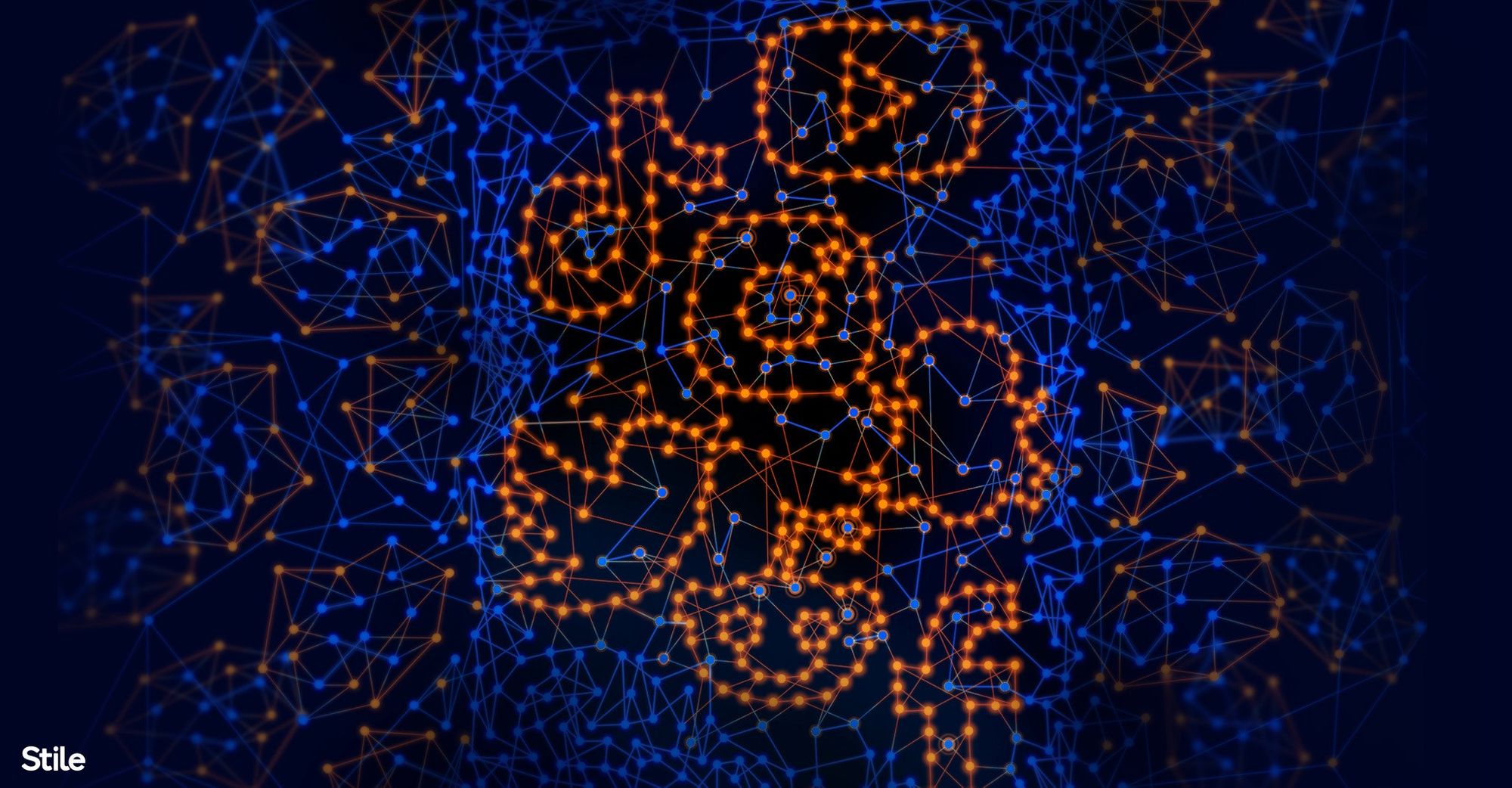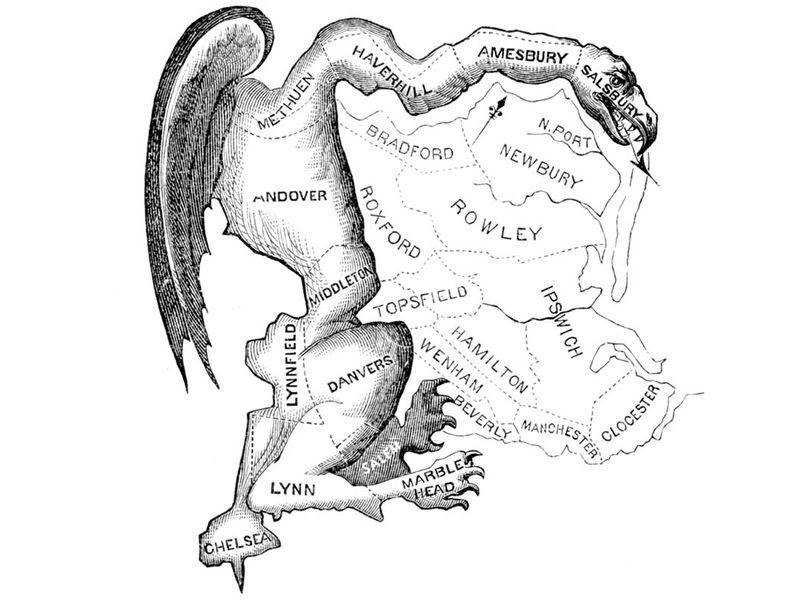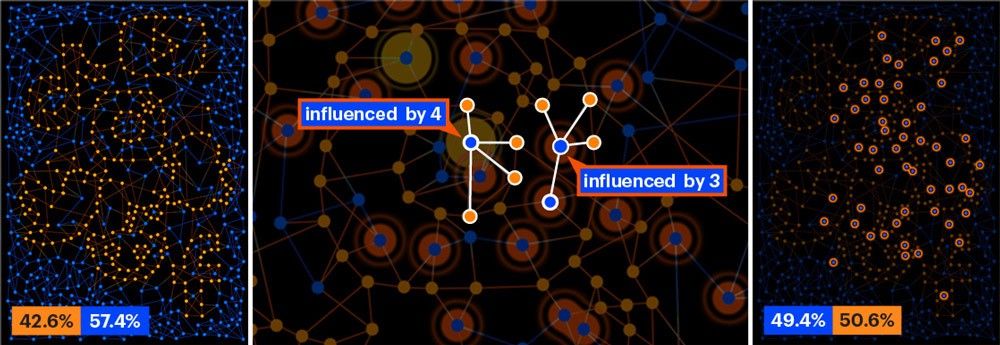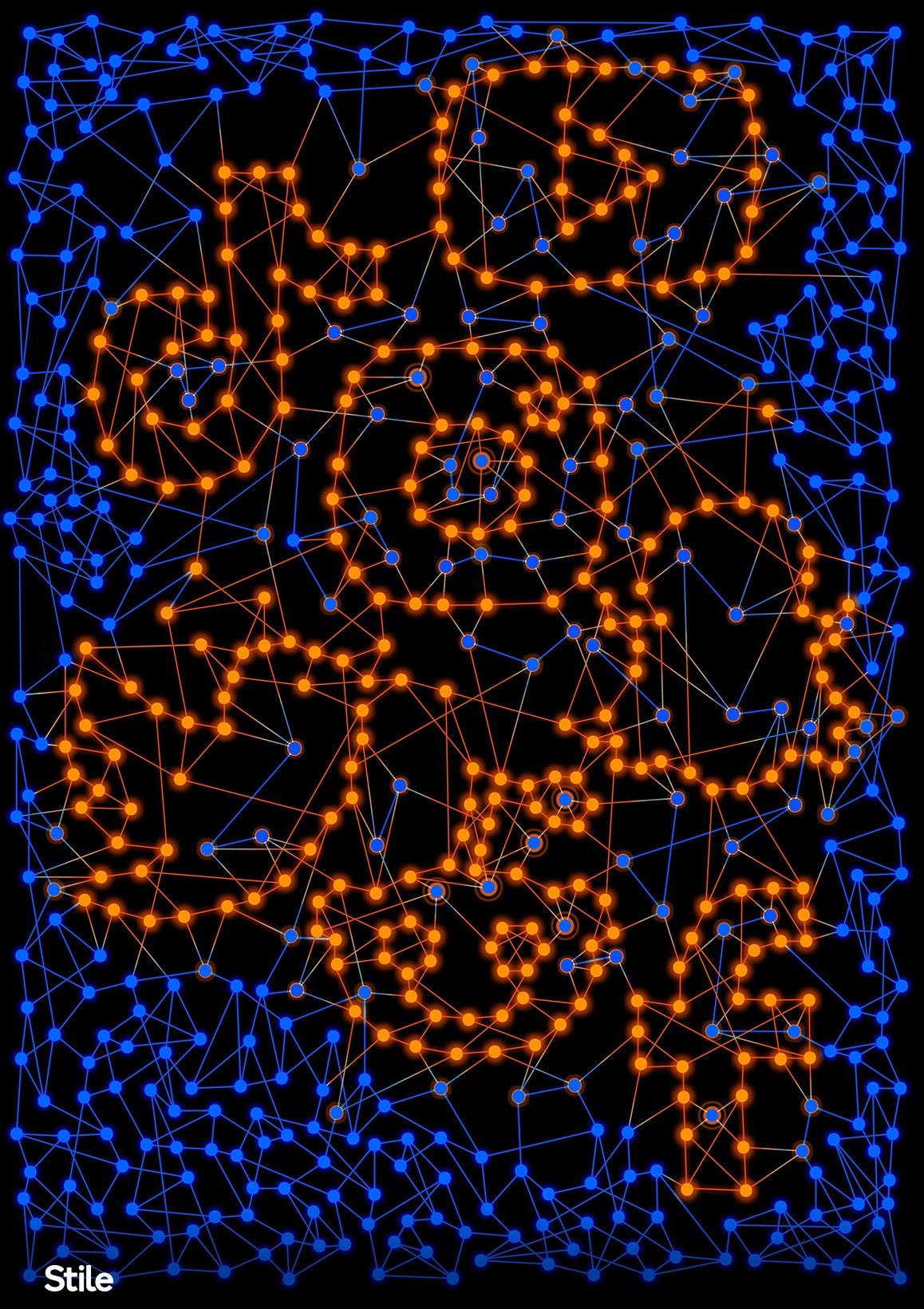Challenging students with important ideas: social media and information gerrymandering

We want our young citizens to graduate from school scientifically literate and ready to tackle tomorrow’s problems; to be equipped to create a better future for themselves and for others.
We’re continuing to centre our lessons around important real-world issues that both challenge students and develop their critical-thinking skills. In a previous blog post we explained why we create science news lessons.
In our latest science news lesson, we’re tackling how social media can influence how we think, act and even vote.
The influence of social media
Social media is ubiquitous in our lives. Students have grown up with social media as a major communication tool and, increasingly, a source of information. While social media has a lot of advantages, there are important aspects that students need to be aware of.
Your students may be asking you about a popular documentary on Netflix, The Social Dilemma. The documentary interviews the inventors and early employees of some of the apps we (and, more importantly, our students) use daily and talks to how manipulative their technology really is. It is required viewing for teens and adults alike.
We’ve created our most recent lesson so you and your students can discuss the role of social media in their lives, what they see in their social networks and how this can skew their perception of the world. As we detail in the lesson, recent studies demonstrate that social media can influence our mood, personal beliefs and whether we vote.
This lesson looks at a number of issues including social media and its algorithms, ethics and intolerance. Students practise a range of skills including collating, graphing and analysing data, and analysing and drawing conclusions from a piece of artwork. The lesson can be used in a variety of different ways: as a break after a test or after the exam period, at the start or end of term or as a special interest piece to break up your current teaching.
Filter bubbles and information gerrymandering
Filter bubbles
Our social networks are designed to reinforce our own views. We’re often isolated into groups of like-minded people which means we aren’t exposed to or challenged by opposing ideas. It also promotes the false belief that everyone thinks the same way we do. But more than just the people that we interact with, social media platforms are complicit in creating these echo chambers. The algorithms behind social media platforms create “filter bubbles” where we’re only presented with curated content that aligns to our views (Pariser, 2011). We don’t see the full array of perspectives. Filter bubbles can make us more extreme, more intolerant and increase political polarisation. This is dangerous for everything, but especially democracy.
In this political climate, it’s difficult not to infer how these ideas have grand implications for the way people make decisions. A recent article published in Nature, “Information gerrymandering in social networks skews collective decision-making”, refers to the concept of information gerrymandering. In case you’re unfamiliar with information gerrymandering, we’ve provided some context below about what it is and why it’s important for students to be aware of.
What is gerrymandering?
The term “gerrymandering” was coined after a US politician, Elbridge Gerry, drew a salamander-shaped district into law in 1812 to diminish the number of seats his political opposition would win (Wines, 2019). Gerrymandering most often refers to “geographical” or “partisan” gerrymandering.

Geographical gerrymandering
Unlike countries such as Australia and New Zealand, the US’s governing political party has the ability to draw up congressional district maps every 10 years. While this might sound innocuous, it can have quite important ramifications. Each congressional district elects a representative to the US House of Representatives, which passes the federal legislature. By being able to draw up the districts, the governing political party can dilute the opposition’s voters into fewer districts allowing the governing party to win more districts and more votes for their proposed federal legislature.
The video below goes into more detail about geographical gerrymandering.
Information gerrymandering
The new concept of information gerrymandering isn’t bound by lines on a map, like geographical gerrymandering. Stewart et al. (2019) from the Nature article refer to “information gerrymandering” as “the structure of the influence network can sway the vote outcome towards one party, even when both parties have equal sizes and each player has the same influence”. Similar to how districts can be drawn up to dilute opposition voters, Stewart et al. suggest that social networks can be arranged to dilute the influence of opposing views. For example, a group of people with only the same political view has a diminished ability to sway anyone with opposing views compared to a group that has a mixture of people with opposing and similar views.
Information gerrymandering isn’t just a theory. Stewart et al. identified “extensive information gerrymandering in real-world influence networks including online political discussions leading up to the US federal elections, and in historical patterns of bill co-sponsorship in the US Congress and European legislatures”. We need to be aware that our social networks can be manipulated and even gerrymandered to achieve certain political outcomes without us knowing.
Artwork representing the influence of social media
Our Art Director, Gus Morainslie, has created this piece inspired by filter bubbles and information gerrymandering. This piece mathematically reflects the echo chambers social networks create through the arrangement of blue and orange connections. The same coloured dots represent people with similar views. Given the dots are mainly connected to other dots of the same colour, each dot is more likely to think that their view is correct and act to reinforce each other. It also means each of these dots is less likely to be able to influence someone with opposing views compared to a dot with more connections to dots of the opposite colour.

Art should prompt questions and feelings and this artwork has been designed to prompt students to reflect on what they see on Twitter, Facebook, Instagram, TikTok, Reddit, YouTube and Snapchat.

It’s critical that students recognise the role social media plays in influencing our views and world perspective. Students should reflect on their own social networks, the topics and views represented and recognise that their views are just one part of a larger picture. As we increasingly get our news from social media, it’s more important than ever that we teach students the skills to seek out information from reputable sources and to critically assess everything they read.
We hope you enjoy this lesson and that it assists you in having this important conversation with your students.
References
Bergstrom, C. T. & Bak-Coleman, J. B. (2019). Information gerrymandering in social networks skews collective decision-making. Nature. 573, 40–41. doi: 10.1038/d41586–019–02562-z
Pattie, C. J. & Johnston, R. J. (2005). Electoral Participation and Political Context: The Turnout–Marginality Paradox at the 2001 British General Election. Environment and Planning A: Economy and Space. 7(37). https://doi.org/10.1068/a3747
Pariser, E. (2011). The Filter Bubble: What The Internet Is Hiding From You. Penguin Books.
Stewart, A. J., et al. (2019). Information gerrymandering and undemocratic decisions. Nature. 573, 117–121. https://doi.org/10.1038/s41586-019-1507-6
Wines, M. (2019, June 27). What is gerrymandering? And how does it work?. The New York Times. https://www.nytimes.com/2019/06/27/us/what-is-gerrymandering.html

